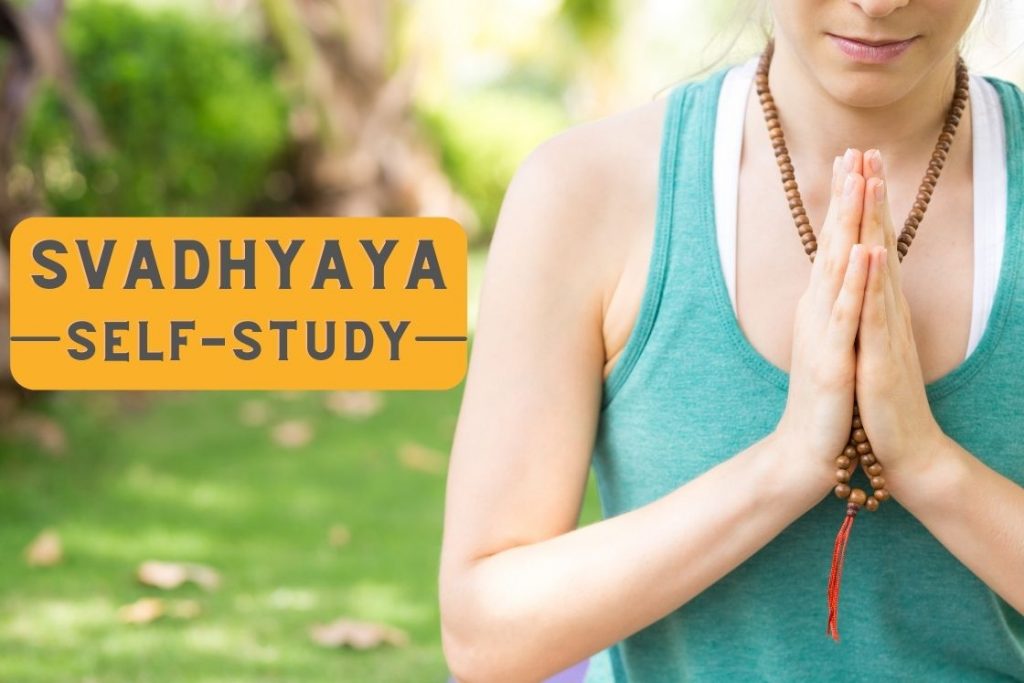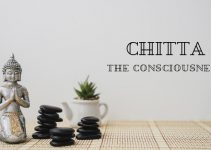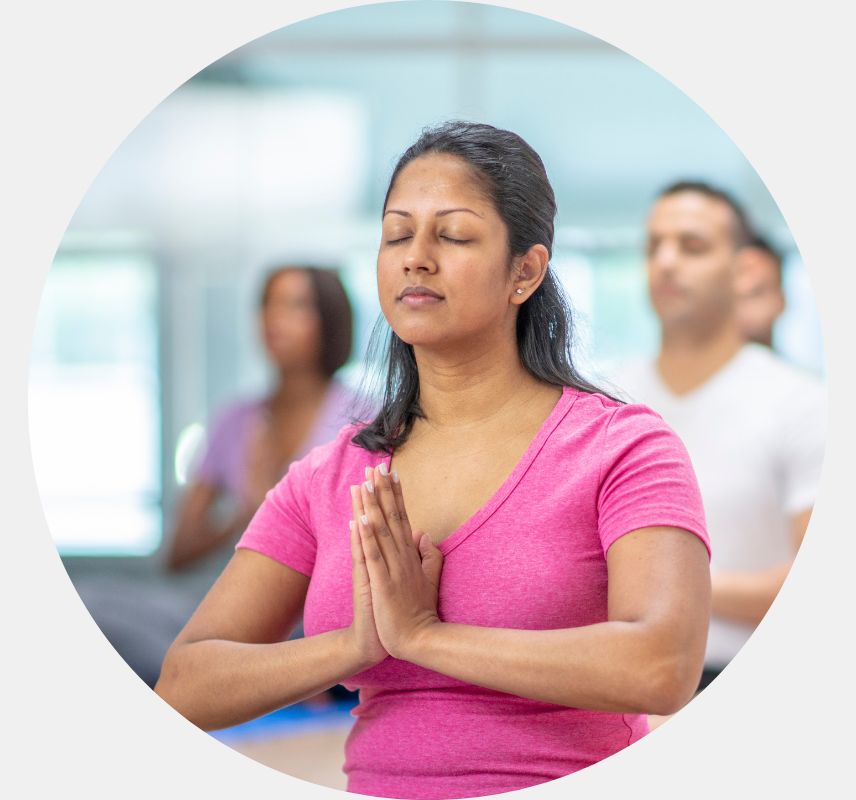
After every chapter in any academic book, there is a section called ‘self-study’. There may be different names to it but what the section is about is essentially the same everywhere. The student is expected to recall, revise, re-analyze the thoughts discussed in the particular chapter.
This is exactly what is meant by ‘Svadhyaya’ in Patanjali’s Yoga sutras. Maharshi Patanjali was a great sage who developed 5 social disciplines, named the Yamas and 5 personal disciplines, called the Niyamas.
In this series of 5 Niyamas, this article explains the fourth niyama; the Svadhyaya.
What is svadhyaya?
Svadhyaya in its true sense is a consistent practice of contemplation, observation and recollection in order to work on the inner self, to purify it. This state of introspection is accomplished through the study of sacred texts, and meditation on a mantra (mantra japa). It yields an increasingly transparent vision of the Self.
In its literal meaning, the Sanskrit term Svadhyaya; Sva means self and Adhyaya means study. The meaning of the word, hence, is self-study. But there is more than one aspect to this.
Svadhyaya is not just the study by the self, it is also the study of the self. The practice of svadhyaya plays the role of a mirror so the person can understand thyself in full physical, mental, and spiritual depths.
Thus, we can say that Svadhyaya means self-study and self-analysis. As discussed by Maharshi Patanjali, it is the fourth personal discipline that people need to follow to expand their spiritual selves.
We see that most of the spiritual enquiries start with the question “Who am I?” Svadhyaya is the most basic realization of the answer to this question. Who am I? What am I made of? What is life? Svadhyaya is the beginning of this self-discovery.
Svadhyaya is explained in two aspects
- One is the study of the scriptures.
- Second is the self-study or the workings of one’s own mind, body, intellect, etc.
Study of the Scriptures

Reading is reflecting, they say. There is a wide range of literature available on yoga that is expected to be read by the yogis. The great Bhagavad Gita, Bhagavata Purana, Patanjali’s Yoga Sutras, Hatha Yoga Pradipika are the texts that define yoga and yogic practices in a detailed manner so as to teach yogis the way to liberation.
By reading these scriptures, the yogi is expected to understand the ideas shared by the texts, contemplate on them, and bring them into practice. They give the most basic idea of the yogic journey and attempt to solve the questions of the person along the way.
The scriptures are the guides to our spiritual expansion. We see a lot of self-help books on chakras and yoga stocked up in the bookstores. The ancient scriptures like the Upanishads or Bhagavad Gita are the first kinds of such books that have been leading people’s way to liberation since a very long time. Because by studying and contemplating on them, one realizes the true workings of the mind and learns to discriminate between the unreal and real.
Studying the scriptures can have a different meaning in today’s world. To apply the practice of Svadhyaya in our daily lives, one can listen to the videos, lecture about scriptural texts, read a blog on them, or also take up a course under a well-informed Guru to learn the scriptures in detail.
Although, only reading the scriptures or just learning to chant the mantras are not enough. Svadhyaya expects to reflect upon the material we study. When we relate what we study with real life, we will be said to be doing Svadhyaya.
Study of the Self
The second important part of Svadhyaya is studying the self. We all often find ourselves disturbed if we have fought with our dear one and said some bad words. This realization of our deeds is expected in this part of the Svadhyaya. When we observe our behaviour, thoughts, perceptions, we are able to reflect on them more clearly. This exercise enables the person to contemplate on every detail of him or herself so that the person can correct the behaviour.
Every day is a new opportunity to correct what was wrong. This way, the svadhyaya allows us to correct the incorrect and enhance the Sattva Guna within us.
When we observe the tiniest changes in our body’s sensations, our breathing pattern, our feelings; when we are happy or upset, we experience the presence of the divine within us. It is the perception of energy and its movements within us. The realization of this movement creates the feeling of respect toward what we have been given by the Supreme. And this is how we should learn to protect and nurture it, through regular practice of Svadhyaya.
Two things can be achieved with the regular practice of Svadhyaya
- Chitta Ekatanata – the steadiness of the mind
- Vak Ekatanata – balance of the speech
When the mind is steady, a person is able to put his/her thoughts clearly, remove the unnecessary, trouble-causing thoughts, and as a result, he can focus on his daily tasks better.
Moreover, when the person’s speech is balanced, he tends not to hurt anyone with his speech. And he understands where and when to speak, leading to peaceful conversations and good associations.
Thus, the practice of Svadhyaya helps us know good things, understand them in a soulful manner, and apply them in our lives to make our living expansive.
Why we practice Svadhyaya?

One might wonder why this aspect of Niyamas is so necessary. Meditation alone can do the work. But as we know Maharshi Patanjali has put the social and personal disciplines (Yamas and Niyamas) ahead of the Asanas and Pranayama, their relevance and importance are undoubtedly significant. Once the social and personal disciplines are achieved, the yogi can move forward to the bodily and spiritual disciplines.
Svadhyaya has its application in the most trivial things of life. For example, if you are willing to buy a new scooter, you first check all the available options in the market, study them, compare them, and then narrow down your options to one single choice. For this, you are undergoing a set of Svadhyayas to be able to choose the scooter of your liking.
If we are so conscious and careful while buying a scooter, should we not be the same about our body and mind when we are using these two to fulfil every function every day? Yoga says yes! We should absolutely, carefully observe our body, breath, mind, thoughts, and feelings to be able to understand the working of the system and to be able to best adjust with the universe.
A person who constantly analyzes himself will be the one who corrects himself for the benefit of others. And when such a good deed is achieved, the person spiritually grows to a higher state.
Swami Vivekananda said,” Every person is potentially spiritual.” There is peace and love within every individual. And to widen this spirituality within humankind, the importance of Svadhyaya is elaborated.
How to Practice Svadhyaya in Daily Life?
Buddha has discussed looking after four factors while practising Svadhyaya.
- Kayanupashyana – observe your body, the pains, the comfort of it.
- Vedanupashyana – Observe the sensations of your body, what is it lacking, what is it signaling etc.
- Chittanupashyana – be observant of your thoughts, what comes and goes from your mind.
- Dhammanupashyana – Observe yourself, your nature, whether you are Tamasic, Rajasic, or Sattvic and do the needful to become a sattvic.
As we now know Svadhyaya is the deep self-enquiry for the expansion of the soul. It is a day-to-day practice and involves consistency. Here is how you can apply Svadhyaya to daily life.
1. Maintain a Journal
Keeping a journal is a form of Svadhyaya that you can follow daily. Write about your thoughts, feelings, aims, successes for the day. Articulating about these will help you recall them and as you recall them, you can understand the details of them. Maintaining journals is a good way to appreciate yourself for doing good and correct yourself upon doing wrong.
It helps us recognize our habits, our true likings and also helps us differentiate between illusory and real. This is the best Svadhyaya practice to keep yourself corrected along your spiritual journey.
2. Good Association with the Literature
The Yoga Sutras, Bhagavad Gita, Upanishads pour the knowledge of extensive kinds in our minds. Such knowledge is considered Godly as it is said to have come from the Supreme Self itself. When we engage ourselves with such good readings, may it mean reading blogs or books or listening to various lectures about them, can enhance our knowledge of the self.
Involve yourselves in such divine readings and contemplate on what you learn from them. This practice of Svadhyaya will give you insights about self-realization.
3. Spend Some Time with Yourself
Keep at least half an hour of your daily routine alone. Go for a walk, do the silent meditation; close your eyes and just watch your breath while spending some time with nature.
Yoga is about mastering your own self, and spending alone time reflecting upon your thoughts and deeds gives you this opportunity to gain mastery over the self. This study of self Svadhyaya will accelerate your way to self-realization.
Svadhyaya on and off the Mat
The effects of Svadhyaya can be increased by performing various breathing exercises on the mat. Our mind is calm and tries to concentrate while we are observing our breath. If you give at least half an hour to this practice of observing the breath, you can enhance the ability to introspect.
Moreover, slow-paced styles of yoga which allows us to hold the poses for a relatively longer duration are good for Svadhyaya practice. In such yoga poses, we use props and some kind of support throughout the whole practice. This practice of being in a yoga pose for a relatively long duration with support makes it easier to watch your posture and alignment by yourself. It’s the best example of Svadhyaya on the mat.
Moreover, Svadhyaya off the mat refers to listening to your inner voice constantly. It will guide the course of your future deeds, behaviours, and feelings. The Upanishads explain the ability of the Yogis to be able to look at themselves from a third-person perspective. As you would watch a child learning to walk, struggling to stand up, balance himself should exactly be the way you should observe yourself. With Svadhyaya practice in daily life, you can gain this ability to watch yourself from a third-person perspective.
Yoga is the union of your body and mind, as well as, it is the union of yourself with the Supreme Self. The practise of Svadhyaya guides us to better understand the first factor of this union- the self. Bringing this practise regularly into our daily lives will bring you a step closer to this union.
The power of self is the most efficient power. And creating such powerful, awakened selves will make this world a beautiful place.




